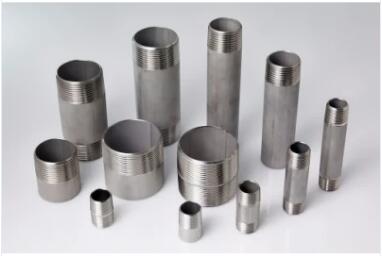How are pipe fittings classified based on function
2023-11-03
Pipe fittings are classified based on their functions and how they are used in a piping system. These classifications help ensure that the right fitting is chosen for specific applications. Pipe fittings can be categorized into several functional types:
1. Connectors:
- Couplings: These fittings are used to join two pipes of the same size, ensuring a secure connection.
- Unions: Similar to couplings but designed for pipes that may require periodic disconnection for maintenance or repair.
2. Directional Changes:
- Elbows: Elbows are used to change the direction of a pipe by 90 degrees (90° elbow) or 45 degrees (45° elbow). They come in various angles and are essential for routing pipes around obstacles and corners.
- Tees: Tees create branch connections in a pipe system, allowing flow in one direction while branching out in two others.
- Crosses: Cross fittings are similar to tees but have four openings, creating branch connections in multiple directions.
- Laterals: These fittings are used to create branch connections in a pipe system while maintaining the main flow direction.
3. Size Changes:
- Reducers: Reducers are used to connect pipes of different sizes, with two main types: concentric reducers (maintain a straight centerline) and eccentric reducers (have one side offset from the centerline).
4. End Closures:
- Caps: Cap fittings are used to close the end of a pipe, effectively sealing it.
- Plugs: Plug fittings are used to close the ends of pipes, valves, or other equipment.
5. End Transitions:
- Adapters: Adapters are used to connect pipes or fittings with different end types, such as threaded-to-welded or threaded-to-flanged transitions.
- Swage Fittings: Swage fittings are used to reduce the size of a pipe or change its end type, often from male to female or vice versa.
6. Attachment and Support:
- Flanges: Flange fittings are used to attach pipes, valves, or equipment securely, providing a leak-free connection. They are common in high-pressure and high-temperature applications.
- Hangers and Supports: These fittings are used to secure and support pipes in place within a piping system.
7. Special Function:
- Nipples: Nipples are short lengths of pipe with male threading on both ends, used to extend a pipe or connect two fittings together.
- Bushing and Inserts: Bushings reduce the size of a pipe or fitting opening, while inserts have a tapered design to facilitate smoother flow transitions.
- Locknuts and Tailpieces: Used in conjunction with compression, push-to-connect, or barbed fittings to secure and connect pipes or tubing.
The choice of pipe fitting depends on its intended function in the piping system. Proper selection and installation of fittings are crucial to ensure the integrity and functionality of the entire system. Different types of fittings are used to achieve specific goals, such as connecting pipes, changing direction, reducing or increasing size, and providing end closures, among other functions.



